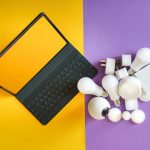Coincidentally, you might be wondering if a USB power button is essential for your home office setup. With the increasing reliance on electronic devices for productivity, having convenient power management is crucial.
In this brief exploration, we'll delve into the practicality of incorporating a USB power button into your home office. From its advantages and drawbacks to compatibility with various devices, we'll provide you with the insights you need to make an informed decision.
Whether you're seeking seamless power control or simply evaluating the necessity of this gadget, we'll guide you through the considerations to help you master your home office environment.
Key Takeaways
- USB power buttons provide convenience and energy efficiency in the home office.
- Compatibility and power consumption should be evaluated before integrating a USB power button.
- Smart power strips offer additional features such as timer functions and remote control capabilities.
- User experience, installation process, and design are important factors to consider when choosing a USB power button or alternative options.
Pros of Using a USB Power Button
One key advantage of using a USB power button in your home office is the convenience it provides for quickly powering on or off your devices with a simple press. This not only saves time but also contributes to energy efficiency by ensuring that devices aren't left on unnecessarily.
The ability to remotely control the power state of your devices from a distance adds to the convenience, allowing you to power down or restart your office setup without having to physically interact with each device.
Moreover, the portability of a USB power button means that you can easily move it from one device to another as needed, making it a versatile tool for managing power consumption in your home office.
Cons of Using a USB Power Button
You might encounter compatibility issues when using a USB power button with certain devices in your home office. Some devices may not support this feature, leading to potential risks such as malfunctioning or even damage.
Additionally, the power consumption of the USB power button itself is a consideration. While it may seem convenient, having an additional device drawing power could increase your overall energy usage.
Unintended activation is another concern to be mindful of. Accidentally pressing the power button could lead to data loss or disruptions in your work.
Moreover, there are security concerns to take into account. If the USB power button is easily accessible, it could pose a security risk if unauthorized individuals can turn off your devices.
It's essential to weigh these cons against the potential benefits to determine if a USB power button is the right choice for your home office setup.
Compatibility With Devices
When considering compatibility with devices, ensure that your home office equipment supports the use of a USB power button to avoid potential issues. Device compatibility is crucial when integrating a USB power button into your home office setup. It's important to verify that your devices, such as computers, monitors, and peripherals, can effectively work with a USB power button. Check the power consumption of your devices to ensure they are within the limits supported by the USB power button.
| Devices | Compatibility | Power Consumption |
|---|---|---|
| Computer | High | Moderate |
| Monitor | Low | Low |
| Printer | Moderate | Moderate |
| Scanner | High | Moderate |
| Speakers | Low | Low |
This table provides an overview of the compatibility and power consumption levels of common home office devices. Understanding the compatibility and power requirements of your devices is essential for determining if a USB power button is a suitable addition to your home office. By ensuring compatibility and managing power consumption, you can effectively integrate a USB power button into your home office setup.
Ease of Use and Installation
Navigating the ease of use and installation of a USB power button in your home office requires attention to compatibility and the specific power needs of your devices.
When considering the installation process, ensure that the USB power button is compatible with your operating system and devices. Most USB power buttons are plug-and-play devices, making the installation process straightforward. Simply connect the button to an available USB port on your computer or a USB hub, and you're ready to go.
The user experience is designed to be intuitive, allowing you to easily power on or off your devices with the push of a button, eliminating the need to reach for individual power switches or navigate through software menus. Additionally, these buttons often come with indicator lights to show the power status, adding to the user experience and convenience.
When selecting a USB power button, consider one with a sturdy and ergonomic design for seamless integration into your home office setup.
With the right USB power button, you can streamline your home office operations and enhance your overall productivity.
Alternatives to a USB Power Button
Consider the option of using a smart power strip with individual outlets as an alternative to a USB power button for your home office. Smart power strips provide a convenient way to manage power usage and can serve as effective alternatives to a USB power button. These power management techniques can help streamline your workspace and ensure energy efficiency.
Here are some alternative solutions to consider:
- Timer Function: Smart power strips often come with built-in timer functions, allowing you to schedule when devices turn on or off. This can help you automate the power management process and reduce energy consumption when devices aren't in use.
- Remote Control: Some smart power strips are equipped with remote control capabilities, enabling you to turn devices on or off from a distance. This can be particularly useful for hard-to-reach outlets or when you want to power down multiple devices simultaneously.
- Energy Monitoring: Certain smart power strips offer energy monitoring features, allowing you to track the power usage of individual devices. This insight can help you identify and address any energy-hungry devices, leading to more efficient power management in your home office.
Frequently Asked Questions
Can a USB Power Button Be Used With All Types of Devices, Including Laptops, Desktop Computers, and Other Electronic Devices?
Yes, a USB power button can be used with all types of devices, including laptops, desktop computers, and other electronic devices. It provides compatibility, energy efficiency, and easy troubleshooting, making it a valuable addition to your home office setup.
Are There Any Security Risks Associated With Using a USB Power Button in a Home Office Setting?
Using a USB power button in your home office may pose security concerns. It can be a potential entry point for malicious attacks. Additionally, it may also contribute to increased power consumption, impacting your energy bills.
Can a USB Power Button Be Programmed to Turn on or off Specific Devices at Scheduled Times?
Yes, a USB power button can be programmed for remote control, improving energy efficiency. You can schedule it to turn on or off specific devices at set times, providing convenience and reducing wasted electricity.
How Does the Installation Process for a USB Power Button Differ for Different Types of Devices?
To install a USB power button, consider device compatibility and the installation process. It provides convenient power management and enhances energy efficiency. Consult device-specific instructions for proper installation and functionality.
Are There Any Environmentally Friendly Alternatives to Using a USB Power Button to Control Power to Devices in a Home Office?
To implement energy saving strategies in your home office, consider eco-friendly alternatives like smart power strips or timers to control device power. These options can help reduce energy consumption and minimize your environmental impact.





